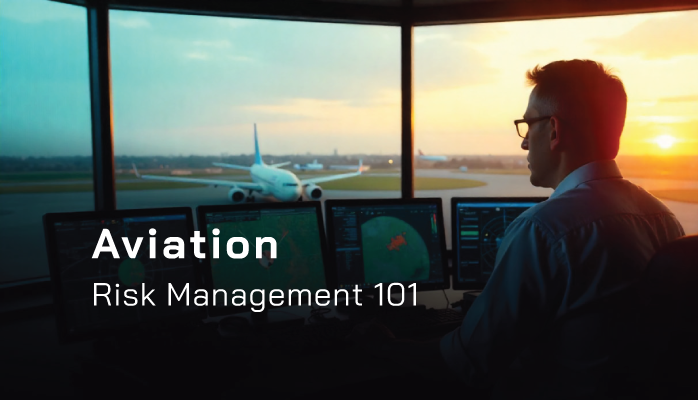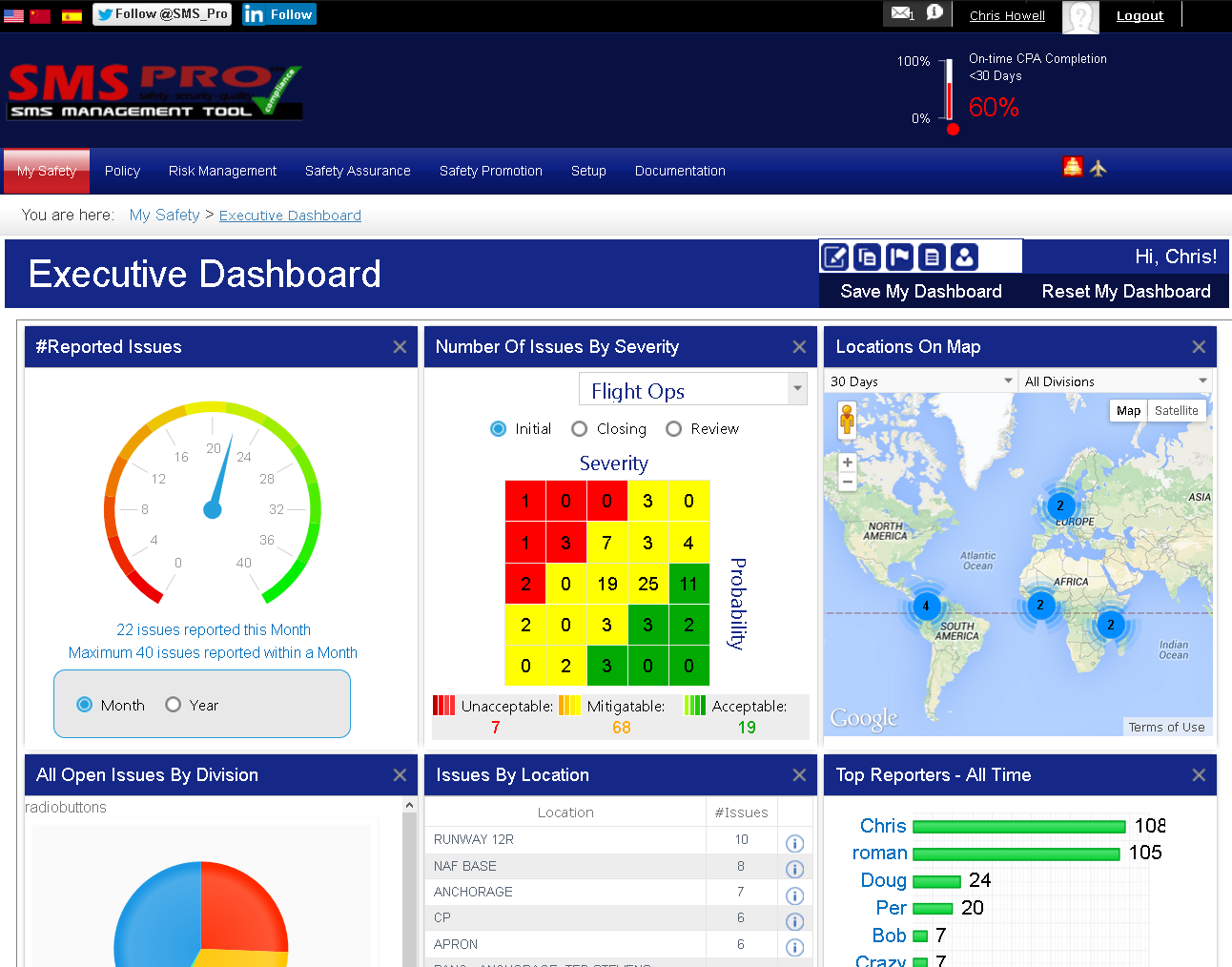Responsibility for Aviation Risk Management

Aviation risk management is the backbone and general goal of modern aviation safety management systems (SMS).
Developing the maturity of an aviation SMS program is tantamount to cultivating more sophisticated, accurate, and proactive risk management strategies.
Responsibility in aviation risk management is kind of a messy word. Historically and structurally, aviation SMS programs are depicted as being top-down.
The clean answer as far as "who has responsibility for risk management" is that management does.
But in actual practice, responsibilities in risk management systems are symbiotic – which is another way of saying that they are distributed.
- Frontline employees have the responsibility to identify, respond, and report safety issues;
- Aviation safety management has the responsibility to analyze reported issues, monitor the SMS, and make changes accordingly; and
- Executives have the responsibility to provide the resources, support, and accountability for the entire program.
In practice, no one of these areas can perform its responsibility without the cooperation of the other two areas. If executives don’t provide sufficient resources → management cannot effectively monitor the SMS → frontline employees will be ill-equipped to identify/respond issues → executives cannot be accountable (i.e. they will instead be liable) for their program.
Each area is responsible for its own part in the process of risk management and taken as a whole to create safety risk management.
Meaning of Risk Management Terms
Several terms sometimes get thrown around or used synonymously, when in fact they actually describe specific things:
- Hazard is a situation or thing that has the potential to harm a person.
- Risk is the probability of harm occurring when exposed to the hazard;
- Risk control is taking action to eliminate risks to an acceptable level of safety (ALS); and
- Risk management is the process of identifying, analyzing, and mitigating hazards and subsequent risks.
The End Goal of Aviation Risk Management

I think the most important conclusion that (hopefully) eventually dawns on everyone who works in safety risk management is that hazards and risks are not static. Their relationship changes in form, severity, and probability every single day depending on delicate environmental and internal factors.
The whole point of risk management is to:
- Understand these changes;
- Incorporate these changes into daily functioning;
- Prepare for these changes; and
- Therefore, reduce vulnerability through event mitigation and hazard reduction.
The process described above is also what we might define as “safety adaptability,” or the ability of the program to account for unique safety situations every day.
The Process of Risk Management
The process of risk management in the aviation industry is, like its responsibilities, symbiotic and cyclical. Each part (employees, management, and executives) works together to create the process of risk management. In an ideal, perfect world it looks like this:
- Employees have the training and experience to identify risks and hazards;
- Employees report safety issues;
- Management manages the issue by analyzing/investigating/classifying it;
- Management reviews safety trends and makes changes to the program;
- Executives/oversight agencies assess the performance of the system;
- Employees' training/experience updated to reflect new insights.
Of course, the real world is far messier, more reactive, full of paperwork and boxes to check off, and above all full of learning from making mistakes.
Ideally, we learn through careful observation and heightened awareness. But the reality is that people screw up and make mistakes. And then we learn. Fortunately, we are at a time now where the historical process of risk management (i.e. the history of screwing up) is long enough and has been thoroughly analyzed enough that we are enjoying record levels of safety.
As you can imagine, newer programs will struggle much more with learning by mistakes. Whereas more mature programs have a better understanding of where they make mistakes (and are thus able to avoid them).
Related Aviation Risk Management Articles
- 3 Main Components of Aviation Risk Management
- 5 Signs of Good Aviation Risk Management Training
- 8 Stages of Safety Events in Aviation Risk Management Process
Identify and Respond

Much like great movie directors/producers make the right conditions for their actors to put on a good show, great executives and aviation SMS managers equip their employees with the proper awareness, knowledge, and tools to:
- Identify potential risk and hazards ahead of time; and
- Properly and quickly respond to safety incidents as they come.
Identify and respond. On paper, it looks so easy. Focusing on these two things will be a helpful catalyst in creating an adaptable, mature SMS program. In reality, having a mature aviation SMS program takes time and energy. Full aviation SMS implementation often takes 3-5 years to get to a point of consistency and maintenance rather than simply trying to be compliant.
Final Thought: Assessing Your Aviation SMS
As important as the practice and process of aviation risk management is your ability to assess your methods, procedures, and strategies. Partially, this is why SMS compliance and safety oversight agencies, such as Transport Canada or the FAA, are so important.
Compliance assures that programs have reached an acceptable level of safety both in practice and in assessing their SMS. Beyond compliance, each SMS program must continue to search its safety data for key performance indicators that make risk management adaptable and resilient.
Last updated in September 2025.






